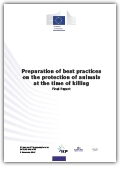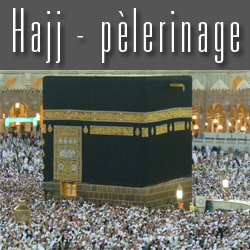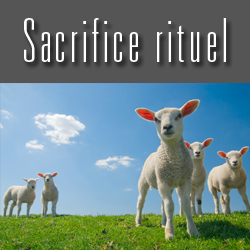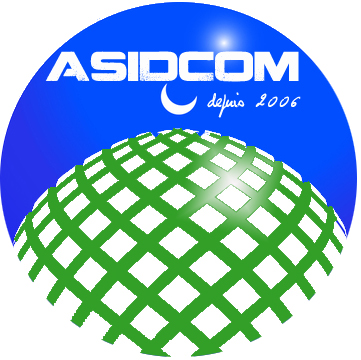Slaughter without stunning : the European best practices

In June, 2017, ASIDCOM was requested within the framework of the European consultation for the elaboration of guides of best practices on the welfare of animals at the time of their killing by particular methods prescribed by religious rites. To optimize its contribution, the association commented the documents that were submitted by the European commission in partnership with Professor Regenstein, and also by drawing on the expertise of the halal certification bodies from Europe, United States and Russia, in particular concerning the industrial practices for the free stun slaughter of the poultry. The participation of ASIDCOM, and its exchanges with the European commission on this matter, can now be provided to our readers, as the report of the consultation is now available on line.
click on image to get the full report
We are particularly confused by the inconsistency between the title of the consultation “Slaughter without stunning” and the number of the sections about stunning that was included in the document. Due to the comments of the religious organizations, the authors modified and used “slaughter without stunning prescribed by religious rites”. Yet, the document remains fuzzy with regard to the legal definition of the religious slaughter.
Also, it is really unfortunate to note once again the rejection of the need to involve the religious representatives to make sure that religious animal welfare requirements are respected in the abattoirs.
The contribution of ASIDCOM and WMCO was completed, as requested by the ICF, by data on the religious slaughter of poultry :
With regard to your request for farther information or sources about my recommendation for poultry case
“it is important to specify the accepted speed (number of animals per minute) based on the number of slaughterers.”,
I would like to provide you the follow remarks and data :
The birds are restrained directly on the line of handling. Thus, in practice, the standards focus on the needed time to the end of life sign, after the cut. The specifying accepted speed is important in poultry as it is needed to work out minimum time to cut & recite Tasmiyya per bird and then multiple up to work out how many slaughtermen are needed to meet line speed such that the time to no sign of life is met before entering the scalding tank. (NB : It is very difficult to check the set of unconsciousness because the high speed in both religious slaughter and stunning process. That’s why for halal poultry, the high skill of the slaughterer, the good quality of the knife and the state of rest of birds are very important to ensure the animal welfare. For that, please kindly complete my comments by the attached letter that I sent to the DG-SANTE, on June 12, 2017.
In France We have only one big abattoir that practices halal slaughter while complying with the CFCM standards (abattoir Laguillaumie). The other abattoirs are local ones close to consumers. But, as I highlighted in my letter to Mrs Eva-aria Zamora Escribano, there is a lack of coordination between the business operators and the religious Muslim representatives to meet both animal welfare and religious standards. Please see below some data from Brasilia, Russia, France and USA. Also, I suggest you to contact directly the number of abattoirs in Romania and Poland that practice the religious slaughter and are supervised by Halal Control Bodies (like AVS, ACHAHADA and Halal Service). The key to meet religious standards while respecting animal welfare is to adapt the Plan to the needed speed (length of the line, number of slaughterers, and number of lines…), if it is feasible, otherwise, it is required to decrease the speed. Russia : “The max speed of line (poultry) is calculated by :
1- The time needed for poultry to die fully. (Any poultry with life sign (any movement)is not allowed in to enter boiler). Median is 3.5 minutes needed for poultry to stop fully. Speed of line should be maximum only if it proves that time is enough after slaughter till boiler. Example : if line speed is 9000, time from slaughter till boiler is 2 minutes, then we need to decrease speed of line to 6000 per hour, until it will be 3 minutes at least. Problem in stunned production is that one cannot check life before boiler (some dead in stunning process, some stunned so hard, that one cannot detect movements), that is why in such production time is very important. 2- The number of slaughterer is calculated as 1 per 1500-2000 birds/hour. Sometimes slaughtering zone cannot fit for 3 or more person, and then it is limit for speed also.”
Source Dinar Sadykov Halal certification Center, Russia www.pro-halal.ru (soon will be opened)
Brasilia : Video shows halal religious slaughter : Source : Adel Sabir, UK http://www.asidcom.org/IMG/mp4/VID-... http://www.asidcom.org/IMG/mp4/VID-...
France : abattoir (Laguillaumie) https://www.youtube.com/watch?v=JtG... United States (Kosher) : The Empire Kosher Poultry using 7 or 8 shochets does 55 birds per minute. (Source P. Joe Regenstein) https://www.youtube.com/watch?v=MOT... - http://www.empirekosher.com/
Regards Hanen Rezgui ASIDCOM & WMCO
Furthermore, the report highlighted that :
There was significant disagreement between consultees and the study team who drafted the documents, or among consultees themselves, on some sections of the drafts.
Documents on slaughter without stunning prescribed by religious rites were the most disputed . In many cases, religious organizations disagreed with the content of the consultation drafts and indicated that some of the practices contradict religious requirements. However, the requirements cited by consultees were often specific to some religious communities. For example, some mentioned the requirements for the ritual cut to include the oesophagus and trachea. The poultry industry expressed also concerns that such a document would create new obligations to the industry, which themselves would be based on a very limited number of sources (given that the team could only identify and review very few good practice documents to inform the drafting of the slaughter without stunning documents).
Many conflicting comments concerned pre-cut and post-cut stunning. On pre-cut stunning, respondents who disagreed with the content of consultation drafts (including religious organisations) indicated that this practice is not accepted by some religious communities.
Some consultees agreed with the draft text on post-cut stunning, while others raised concerns on animal welfare issues associated with the technique or other related aspects of ritual slaughter. For example, a consultee indicated that prolonged consciousness shown by animals is often due to animal welfare issues before the cut (such as the incompetence of the religious slaughterer), which should be tackled rather than resolved with post-cut stunning. Similarly, another consultee stated that a well-performed bleeding ensures that the animal collapses quickly, without the need for a post-cut stun.
NCPs, animal welfare organisations and scientific support institutes referred to the risks of poor stunning associated with the use of non-penetrative captive bolt as a method for pre-cut and post-cut stunning of bovines. These respondents proposed to revise the classification of this practice as “acceptable” (or “unacceptable”), instead of “good”. For example, a respondent cited the high percentage of ineffective stuns associated with the use of a non-penetrative captive bolt. These concerns were widespread.
There were also views on mechanical restraining methods, and particularly on the relative merits of upright and rotating stunning pens, which reflect the broader debate in the field on these methods.
There was also disagreement on the electric parameters for waterbath stunning of poultry. For example, two NCPs indicated concerns that, in reality, the parameters used for ritual slaughter differ from those presented in the consultation drafts, and that they often result in poor stun quality. Since the parameters provided in the drafts originated from existing voluntary standards rather than the regulation, there were concerns that those would be inadequate to achieve an effective stun.










